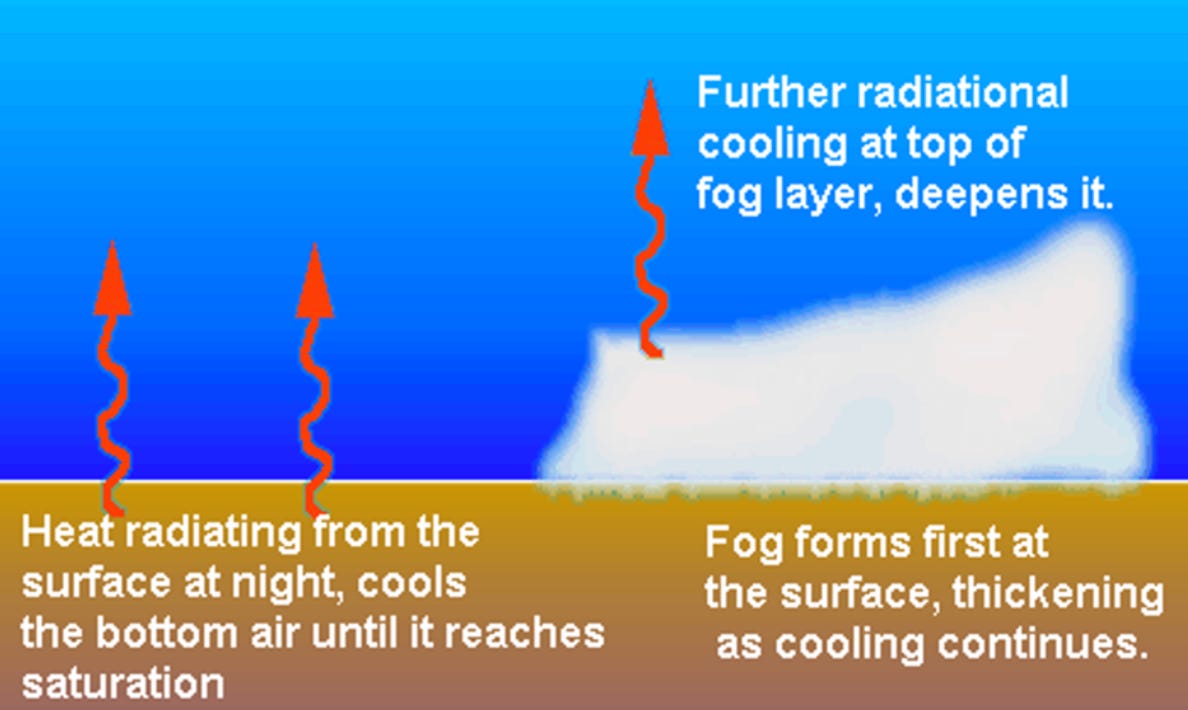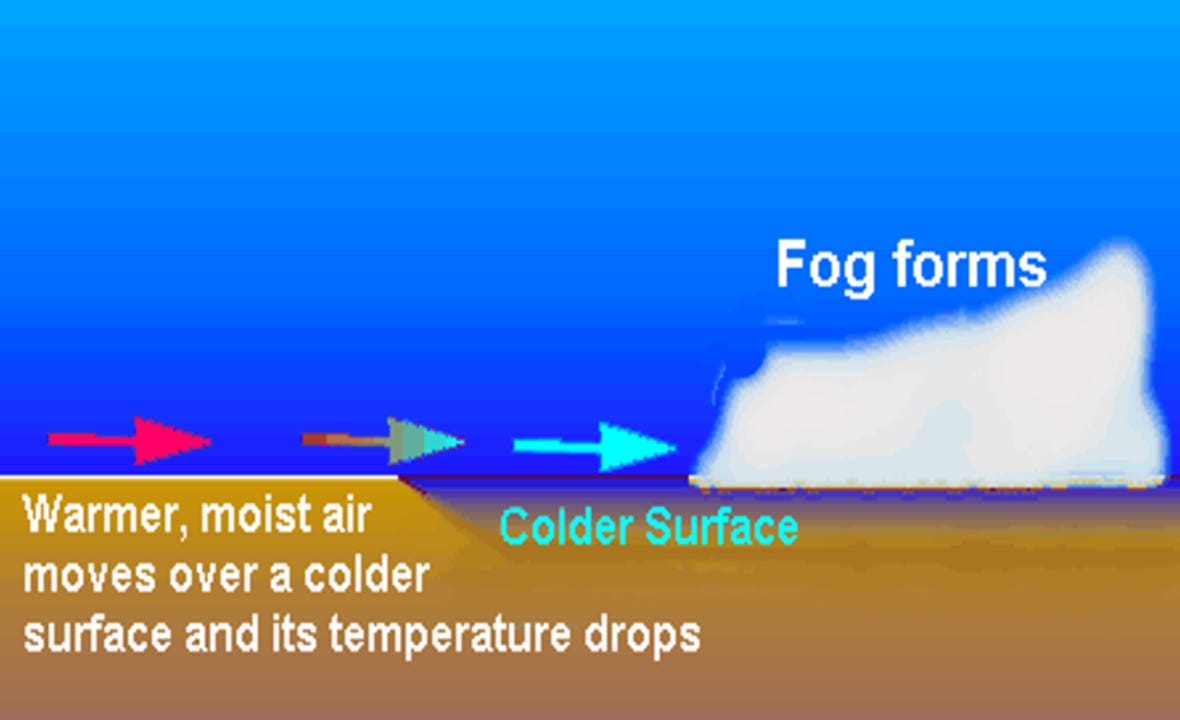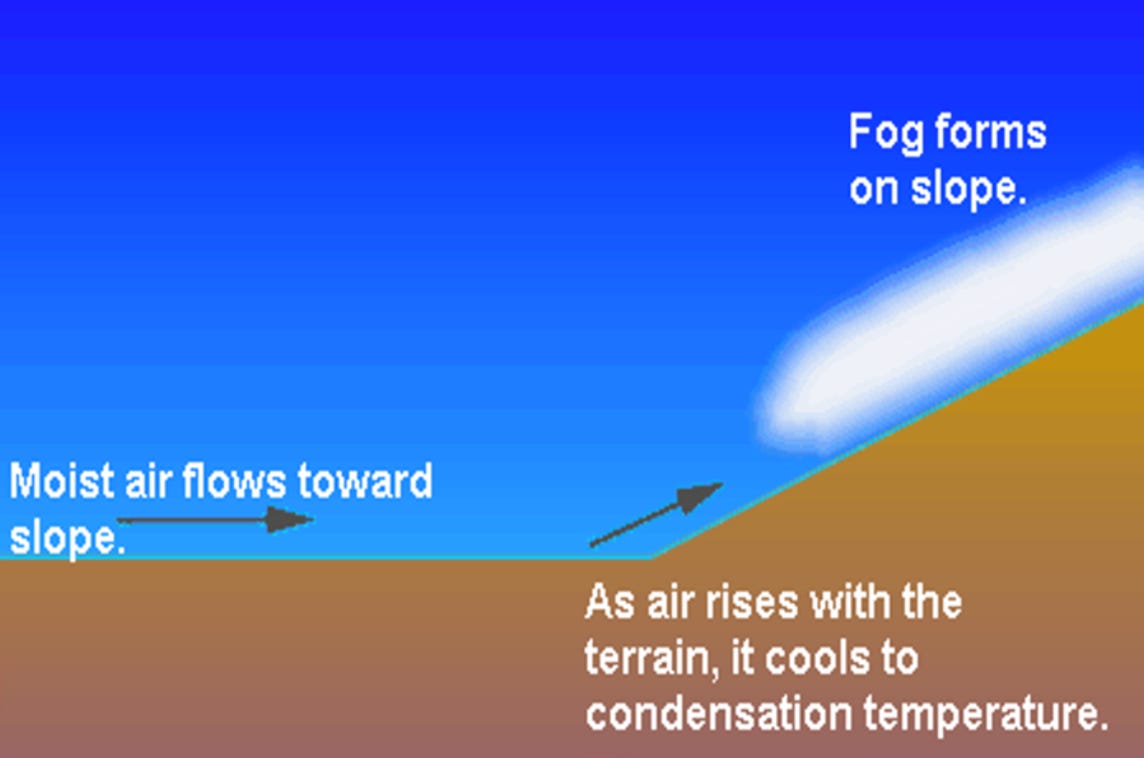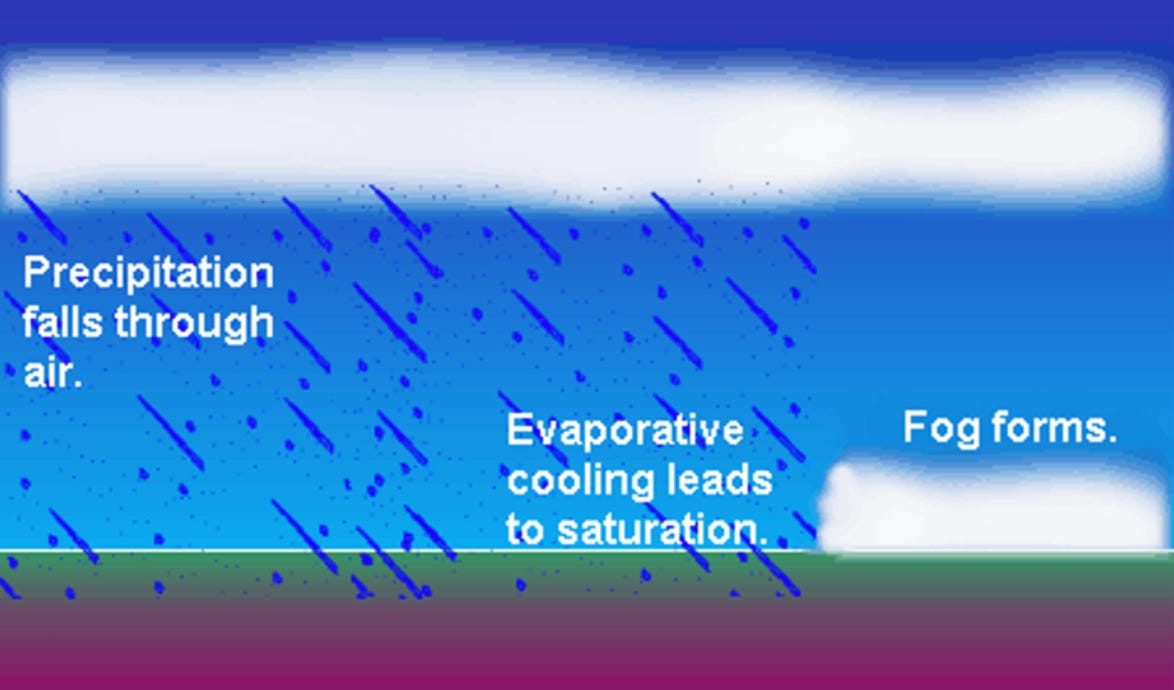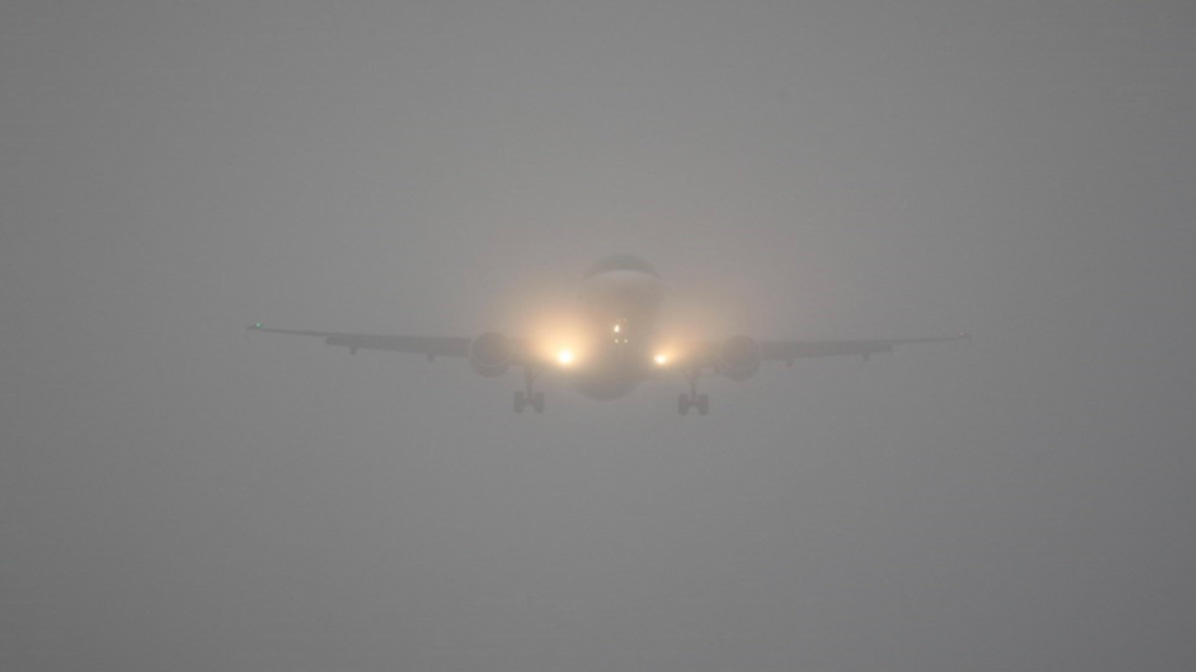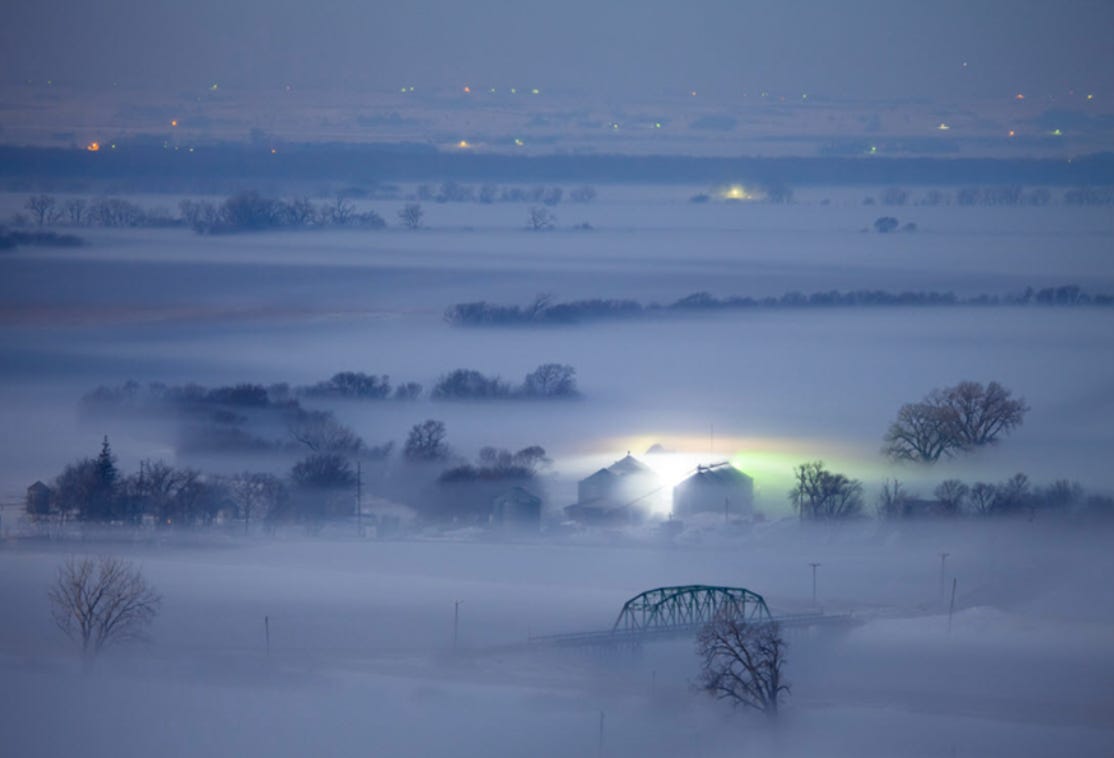Low Visibility Operations Masterclass | Part 2
Understanding Fog: The Hidden Challenge of Aviation Visibility
Hey everyone and welcome back to this A320 Knowledge Masterclass.
Fog is often an unseen force that drastically impacts aviation operations worldwide. As one of the most frequent and persistent weather challenges, it plays a pivotal role in determining flight safety. Whether you’re a seasoned pilot, an aviation enthusiast, or someone who simply wants to understand how this weather phenomenon affects air travel, this article will provide you with in-depth insights into fog’s impact on visibility and its various forms.
Let’s dive right in.
Insights at a Glance:
Fog is a significant aviation challenge, reducing visibility and making it difficult to operate flights safely.
Different types of fog form through various mechanisms, and each type presents unique risks.
Aviation operations rely on understanding fog's density, structure, and type to navigate it successfully.
Practical strategies are employed by pilots to deal with fog during low visibility operations, including training and procedure protocols.
Subscribe to the A320 Knowledge YouTube Channel!
Fog: A Closer Look at Its Role in Aviation
Fog, at its core, is a surface-level cloud made up of tiny water droplets or ice crystals. While this weather phenomenon seems deceptively simple, its ability to rapidly decrease visibility can make it one of the most difficult challenges for pilots to handle.
In aviation, visibility is crucial for safe take-offs, landings, and in-flight navigation. Fog is a leading cause of visibility dropping below the 3-mile threshold required for standard flight operations. This weather issue is both frequent and persistent, making it a major consideration for airports and airlines worldwide.
What makes fog particularly hazardous is its ability to form quickly, often reducing visibility from several miles to less than a mile in just a matter of minutes. This swift development can severely disrupt flight schedules and safety.
The Science Behind Fog Formation
Fog doesn’t simply appear out of nowhere. It forms when the temperature and dew point are nearly identical, coupled with ample moisture or condensation in the air. Essentially, fog forms when air near the ground cools to its dew point, leading to condensation. When the moisture content reaches a saturation level, tiny water droplets or ice crystals form, resulting in reduced visibility.
Several factors contribute to fog formation:
High humidity: Areas with high levels of moisture in the air are more prone to fog formation.
Temperature drops: When temperatures cool, the air can no longer hold moisture, leading to condensation.
Air cooling to the dew point: When the air temperature and dew point converge, fog becomes more likely.
Coastal regions, with their high humidity, and industrial areas, where combustion byproducts increase condensation, are particularly vulnerable to fog. In these regions, fog can be a frequent occurrence, impacting aviation operations regularly.
The Different Types of Fog
There are five primary types of fog, each with its own formation process and unique challenges for pilots:
Radiation Fog: This type of fog forms close to the ground, typically during nighttime or early morning hours. It occurs when the ground cools and chills the air in contact with it, reaching the dew point. Radiation fog is often shallow but can be dense enough to obscure visibility. The most significant factor in radiation fog is the ground temperature; it forms most readily after rain-soaked ground has cooled, especially when skies clear at night.
Key Considerations: Radiation fog is most common in land-based areas as water bodies don’t cool as significantly overnight. Pilots should expect it in areas with clear skies, light winds, and high humidity.
Advection Fog: Advection fog forms when warm, moist air moves over a cooler surface such as land or water. Common along coastal areas, it’s often referred to as sea fog. This type of fog can develop quickly at any time of day or night, and its density can increase with wind speeds of up to 15 knots. Higher winds can lift the fog into a low stratus cloud, making visibility even worse.
Key Considerations: Advection fog is persistent, widespread, and often occurs along coastal areas. Pilots operating in these regions must be prepared for it at any time.
Upslope Fog: This fog appears when stable, moist air is forced upwards along sloping terrain. As it rises, the air cools and forms fog. Upslope fog is denser and can extend to high altitudes, and unlike radiation fog, it can form even under cloudy skies. This type of fog persists as long as the upslope wind continues.
Key Considerations: Upslope fog can be challenging at higher altitudes and in mountainous terrain. Pilots should be aware of its potential in these areas, especially during stable weather conditions.
Precipitation-Induced Fog: This fog forms when warm precipitation falls through cooler air. The evaporation of the warm precipitation saturates the cooler air, causing fog formation. Precipitation-induced fog is frequently seen near warm fronts, but it can also develop near slow-moving cold fronts.
Key Considerations: This fog is often associated with icing, turbulence, and thunderstorms, adding extra complexity to flight operations in affected areas. Pilots must be prepared for these additional hazards.
Ice Fog: Ice fog occurs in extremely cold temperatures, typically below 20°F (-6°C), when water vapor changes directly into ice crystals. This fog can appear under clear skies and is most common in Arctic regions. It is particularly challenging when flying towards the Sun, as it can create blinding conditions, even in low-visibility (Cat 1) weather.
Key Considerations: Ice fog can occur suddenly in cold conditions, posing unique challenges to visibility and navigation. It is a significant concern in colder climates.
Understanding Fog in Aviation Operations
In aviation, fog’s impact on visibility is categorized into different levels, primarily by its thickness and density. The key challenge for pilots lies in how these fog conditions impact aircraft operations, particularly during landing and take-off. Here’s how fog is classified for aviation:
Cat 1 Weather: In Cat 1 conditions, visibility is primarily limited by cloud bases, precipitation, and airborne particles. Fog might reduce visibility, but the aircraft can still operate with basic visual navigation.
Cat 2 and Cat 3 Weather: In these conditions, fog becomes the primary factor limiting visibility. Pilots rely on instrumentation and radar to navigate through thick fog during low-visibility approaches.
Understanding the structure of fog is crucial for navigating through it. Fog can vary in density and homogeneity, which significantly affects how visibility changes with altitude:
Homogeneous Fog:
This is marked by a consistent density throughout its height, meaning visibility improves gradually as an aircraft descends into the fog’s thinner layers. This predictable nature allows pilots to anticipate how visibility will change during their descent, offering a smoother approach compared to other fog types. It typically forms in stable, calm conditions, often near bodies of water or in coastal regions with high humidity, and is commonly used in flight simulators to provide a controlled training environment.
In a simulator, homogeneous fog is beneficial for practicing low-visibility landings, as it creates a steady, uniform challenge for pilots. The fog’s gradual thinning as altitude decreases allows pilots to refine their descent techniques, knowing that visibility will improve as they approach lower levels. This consistency makes homogeneous fog less hazardous than other types, providing a reliable training tool and offering predictable changes in visibility during flight.
Mature Fog:
Mature fog becomes denser at higher altitudes, with visibility improving as the aircraft descends into lower, less dense layers. This fog often forms under stable atmospheric conditions, where surface fog deepens as the air cools. Pilots may face thicker fog at higher altitudes, making for a challenging descent, but as they approach the surface, the fog tends to thin out, allowing for clearer visibility.
The challenge of mature fog lies in its varying density, which can make it difficult to judge visibility changes. Pilots must adjust their approach strategy to account for this, staying alert as they descend and ensuring that they don’t misjudge improving conditions. While it offers the potential for clearer visibility at lower altitudes, pilots need to be cautious of its denser layers at higher levels, which can create a deceptive illusion of improving conditions.
Shallow Ground Fog:
Shallow ground fog forms close to the surface and tends to dissipate quickly with altitude gain. This fog is common in the early mornings or late evenings, where rapid cooling at the ground causes condensation. The key characteristic of shallow fog is that it doesn't extend far above the surface, meaning pilots can escape it with just a small altitude increase.
Pilots often find it easy to break free from shallow ground fog by climbing just a few hundred feet. While it can pose a challenge during takeoff or landing, it is generally less dangerous than deeper fog types. Understanding that this fog will clear quickly with altitude gain allows pilots to manage their approach and escape the reduced visibility efficiently.
Technological Advancements: Enhancing Fog Detection and Safety
As fog remains a significant challenge in aviation, technological innovations continue to play a key role in improving safety during low-visibility operations. Modern aircraft are equipped with advanced radar, LIDAR (Light Detection and Ranging), and enhanced vision systems that can detect fog and help pilots navigate more safely through foggy conditions. These systems provide real-time data on visibility, even in areas where fog obscures the pilot's line of sight, giving them an additional layer of information when making critical decisions.
In addition, ground-based systems, such as Instrument Landing Systems (ILS) and Precision Runway Monitoring (PRM), help pilots maintain precise control during approaches, especially in dense fog. These technologies allow for Category II and III instrument approaches, where aircraft can land safely even in near-zero visibility. By complementing the pilot’s skills with cutting-edge technology, the risks associated with fog can be mitigated, making flights safer and more efficient. The combination of human expertise and advanced systems demonstrates how innovation is continuously enhancing aviation safety in the face of natural challenges like fog.
Key Takeaways:
Fog Formation: Fog forms when the air cools to its dew point, and tiny water droplets or ice crystals develop in the air. High humidity, temperature drops, and clear skies are key factors.
Types of Fog: Each fog type (radiation, advection, upslope, precipitation-induced, and ice fog) has unique formation processes and challenges. Pilots should be familiar with the types most common in their regions.
Fog and Visibility: Fog reduces visibility, particularly in Cat 2 and Cat 3 weather, where it’s the primary limitation. Pilots must rely on instruments and proper training for low-visibility operations.
Training and Preparedness: Simulator training and practical experience are essential for pilots to handle fog effectively. The ability to understand fog’s behavior and how it changes with altitude is key to navigating safely.
If you found this Masterclass helpful, consider sharing it with others or leaving a comment below with your thoughts.
I’ll see you in the next one.
A320 Knowledge



